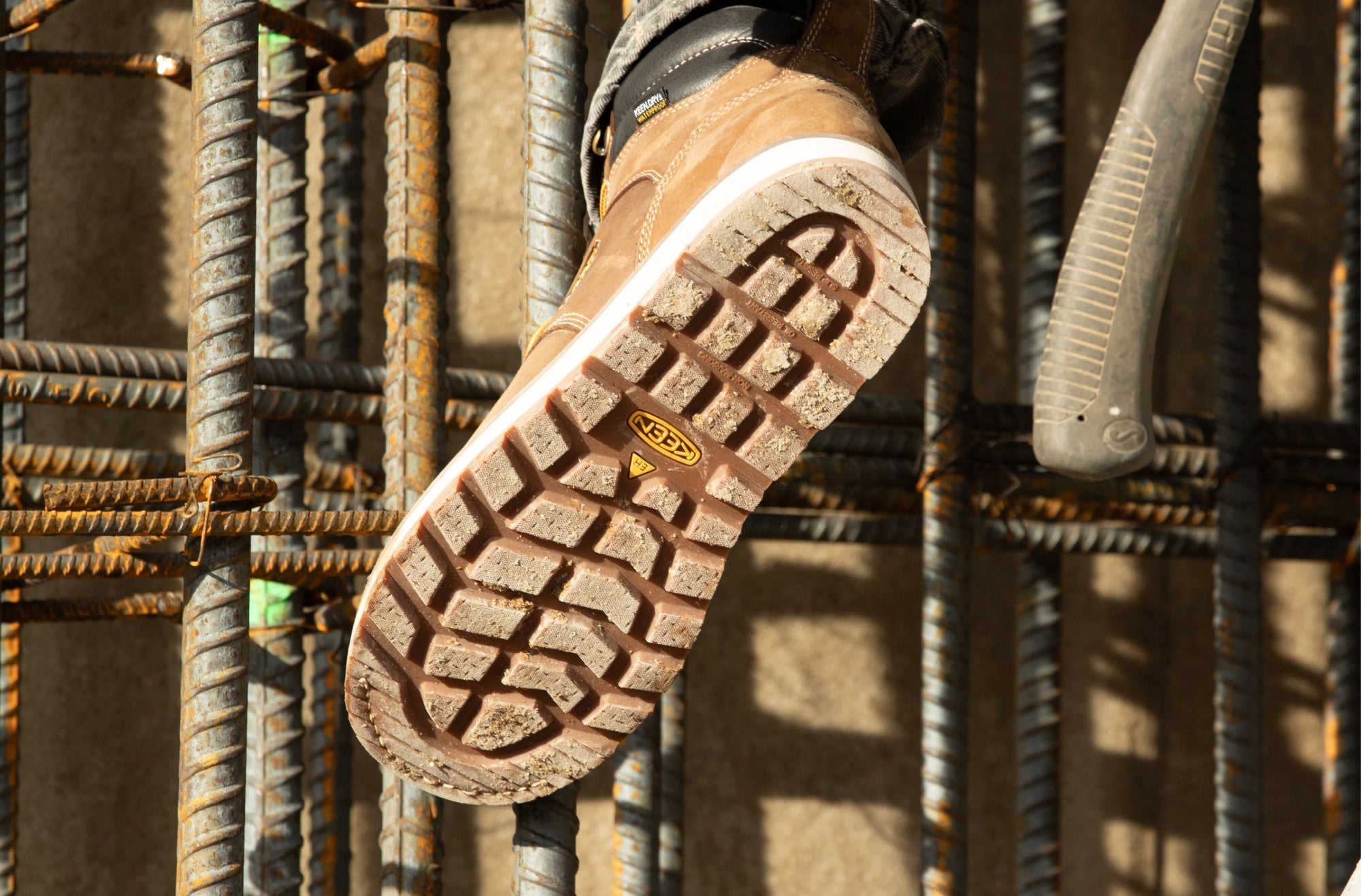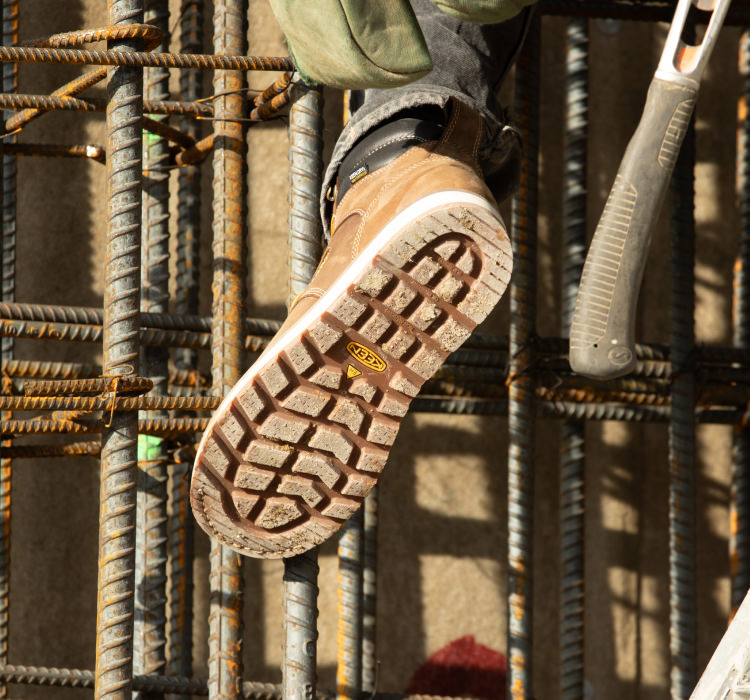Around the world, nearly a million plastic beverage bottles are sold every minute. Thirty-five billion plastic bottles are thrown away every year (and that’s just bottles). Each one will take at least 450 years to degrade on its own. We just don’t have time for that.
Luckily, more and more companies are discovering that using recycled materials in their products can create great stuff with a lighter footprint. And we should know, because we’re one of those companies. And we're finding more and more ways to work them into different parts of our boots, sandals, and shoes.
Going Circular With Shoemaking
Here at KEEN, we're looking forward to the circular economy. (What’s the circular economy? It’s just what it sounds like—rather than a linear economy that turns raw materials into products, then disposes of those products, and then does it all over again, the circular economy is about finding ways to make products that can be endlessly recycled, repurposed, and reused. The more of our economy we can transition to circular systems, the less waste we’ll ultimately generate.)
“For the past several years, we have been on a path to identify and remove harmful chemicals in our supply chain, and make choices that lighten our impact on the planet. We’re proud of every step we can make.”
– Kirk Richardson, Senior Director, KEEN Corporate Responsibility
We've been working hard to increase our participation in the circular economy through the use of recycled or repurposed materials. For example, our Harvest Flip sandal is cushioned with recycled foam and rubber, and our Elena sneaker is made with recycled canvas.
We also make components of our shoes (and dog leashes and bags) with high-performance textiles created from old plastic bottles. Recycled plastic textiles don’t just keep old soda bottles out of landfills. When we go with recycled material, we’re not using any new petroleum. That means fewer greenhouse gases and a savings on water and energy.
But how exactly do discarded plastic bottles transform into, say, sturdy materials for adventurous shoes (or cozy fleeces, or sleeping bags, or any number of useful products)? The process goes like this:
STEP 1: GET THE BOTTLES
Plastic P.E.T. bottles are collected worldwide from recycling points, gathered from beaches, or fished out of waterways.
STEP 2: MAKE FLAKES
Those bottles get sorted, washed, and finely chopped into flakes.
STEP 3: FLAKES BECOME CHIPS
These plastic flakes are melted down and made into small beads, called “chips.” These chips are easy to store and transport.
STEP 4: CHIPS BECOME FIBER
Chips are melted into goo that’s extruded through tiny openings in a spinneret machine (like how a spider spins her web). This creates super-fine filaments that combine to form fiber.
STEP 5: FIBER BECOMES WEBBING, FABRIC, OR INSULATION
This recycled plastic fiber is spun into yarn, making webbing and fabrics that reduce waste, energy and water use, and greenhouse gas emissions.

Most of our new sandals use webbing and cord made with recycled post-consumer plastic (in some styles, up to nine bottles go into each shoe). You'll also find recycled plastic fiber in the insulation of our Revel IV polar boots. By weaving in recycled P.E.T. plastic, we’re helping reduce energy, water use, and greenhouse gas emissions, and keeping about one million plastic bottles out of the waste stream.
“Using recycled plastic helps us do good by conserving resources for the future. These recycled yarns include a permanent tracer, so we can see how many plastic bottles we save from going to landfills with every pair. That feels good,” says Himanshu Patel, KEEN Senior Materials Manager.
We Need to Move Past Plastic
Working to repurpose post-consumer plastic and join the circular economy are important tasks for today’s brands. The next wave? Finding ways to reduce the amount of single-use plastic being produced in the first place. Read more about how one KEEN employee got involved in lobbying for plastic reduction.
“Plastic is cheap and convenient, but it takes 450 years to break down something we consume in just a few minutes. We need to go to the source and eliminate plastic packaging.”
- Elsa Clements, KEEN Green Team












